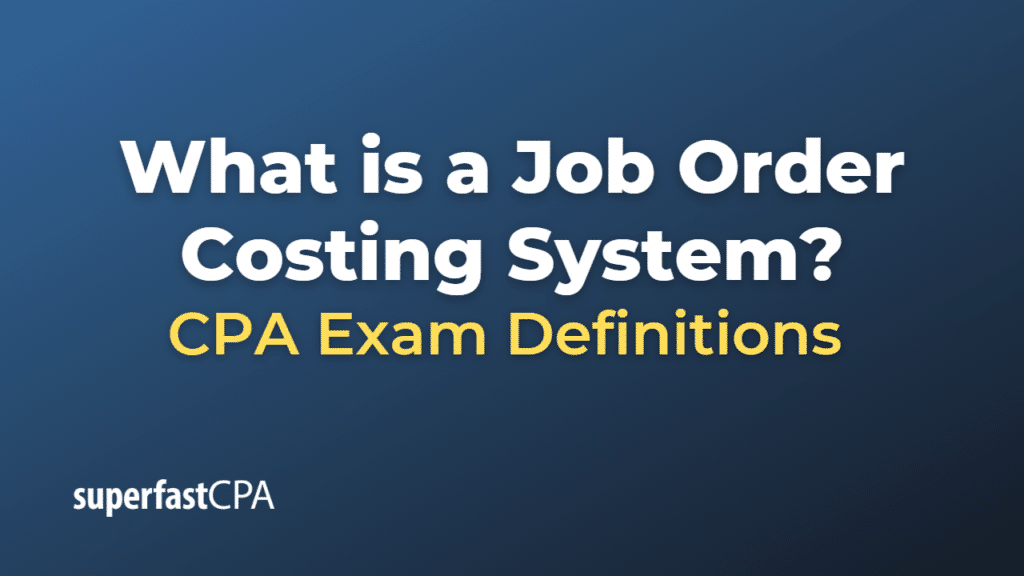Job Order Costing System
A job order costing system is an accounting methodology used when a business’s output is unique or custom orders. This method allows the business to track the direct and indirect costs associated with specific jobs or orders, enabling accurate and detailed profitability analysis for each job.
In a job order costing system, costs are assigned to each job or batch, which includes materials, labor, and overhead. Each job or batch has a job cost sheet where these costs are recorded.
The steps involved in the job order costing process typically include:
- Materials: As materials are requisitioned and used for specific jobs, their costs are recorded on the respective job cost sheet.
- Labor: The cost of labor is tracked through time cards or other mechanisms, with the costs being allocated to the specific jobs that the labor was applied to.
- Overhead: Overhead costs, which are not directly attributable to specific jobs, are allocated to jobs using some form of cost driver. Common cost drivers include direct labor hours, machine hours, or direct material costs. The method of overhead allocation can vary widely depending on the company and the nature of its overhead costs.
- Job Completion: Once a job is completed, the total cost is summed on the job cost sheet and then transferred to the finished goods inventory.
- Sale: When the job is sold, the cost is transferred from the finished goods inventory to the cost of goods sold.
This method is typically used in industries where goods are produced based on specific customer orders, and where each product has a significantly different cost. Examples include construction companies, manufacturing companies producing customized products, advertising agencies, etc. It is contrasted with process costing, which is used when a company produces large quantities of identical or similar products.
Example of a Job Order Costing System
Let’s consider a custom furniture manufacturer who operates on job order costing.
- Order Received: A customer places an order for a bespoke dining table.
- Materials: The company determines that the job requires $500 in wood, $100 in screws and other hardware, and $50 in varnish and stain. As these materials are requisitioned for the job, their costs are recorded on the job cost sheet for this specific table.
- Labor: Two employees work on the table. One is paid $20 per hour and works for 10 hours, and the other is paid $25 per hour and works for 8 hours. The total labor cost ($200 + $200 = $400) is also added to the job cost sheet.
- Overhead: The company uses direct labor cost as its overhead allocation base. If the company’s predetermined overhead rate is 150% of direct labor cost, then the overhead applied to the job would be $600 (150% of $400 labor cost). This overhead represents shared costs like electricity for the workshop, depreciation on equipment, etc.
- Job Completion: The table is completed. The total cost of the job is added up: $500 (materials) + $100 (hardware) + $50 (varnish and stain) + $400 (labor) + $600 (overhead) = $1,650. This cost is now recorded in the finished goods inventory.
- Sale: The table is sold to the customer. The cost of $1,650 is transferred from finished goods to cost of goods sold.
By using the job order costing system, the furniture manufacturer is able to accurately track the costs associated with each custom piece of furniture, helping the business set appropriate prices and understand the profitability of each job.













